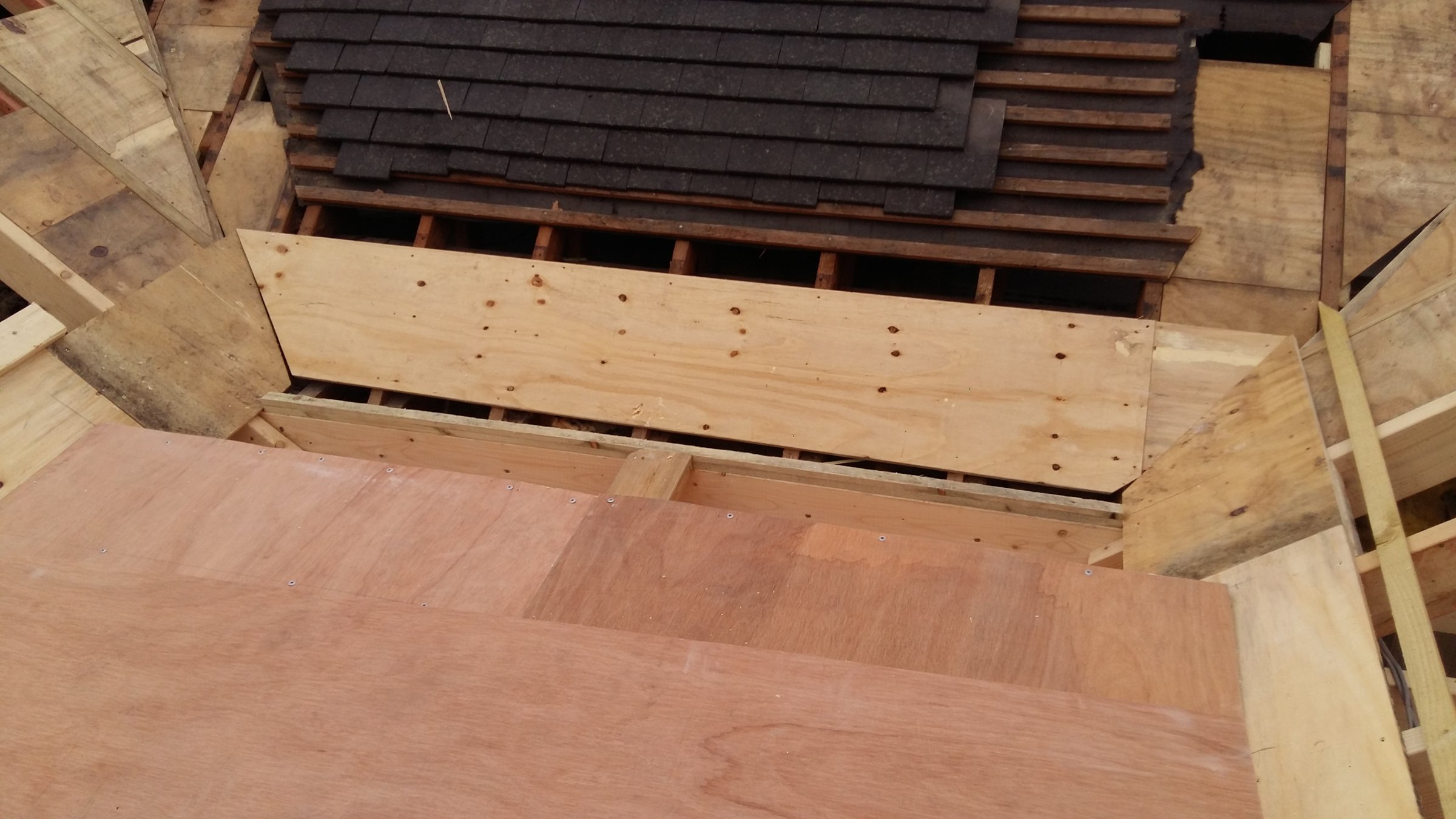So, I was wrong about the cut tile - I've now got a full tile there. I also put back the bit of facia that broke off and shaped it above the tile. I haven't put flashing on it yet - will do that at the end (oh and its definitely needed - my soak test proved it was getting sprayed a bit).

I added took the opportunity to replace the broken underlay and then initially I put it all back together with a sheet of underlay the same size as the lead would be. I then tested with a hosepipe fired into the air to simulate heavy rain and after 10 minutes no leak. ANd I thought cosmetically looked ok. Great I thought....

However, when today I replaced the temporary "lead" apron with real lead I had trouble with the tiles. You can see it has pushed one tile up quite a bit. The roof still doesn't leak but I don't really like it like that. Maybe the lead apron is too big or just in the wrong position? It was getting dark so ended up rushing a bit - maybe that was my problem.


I'm going to mortar only when I'm 100% happy with the rest.
I added took the opportunity to replace the broken underlay and then initially I put it all back together with a sheet of underlay the same size as the lead would be. I then tested with a hosepipe fired into the air to simulate heavy rain and after 10 minutes no leak. ANd I thought cosmetically looked ok. Great I thought....
However, when today I replaced the temporary "lead" apron with real lead I had trouble with the tiles. You can see it has pushed one tile up quite a bit. The roof still doesn't leak but I don't really like it like that. Maybe the lead apron is too big or just in the wrong position? It was getting dark so ended up rushing a bit - maybe that was my problem.
I'm going to mortar only when I'm 100% happy with the rest.





